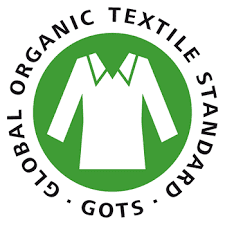As the world´s leading standard for processing of organic fibres, GOTS covers not only the use of organic fibres, but also requires conformance with stringent environmental and social criteria throughout the textile processing chain. The industry uses various amounts of chemicals during textile processing. The wastewater produced in this process contains large amounts of dyes and chemicals. This factsheet highlights the Control of Chemicals in GOTS Goods.
The standard criteria exercises control on hazardous chemicals at three different stages:
Stage1: Approval Prior to Use
Stage 2: Processed Main Textile Material
Stage 3: Accessories and Additional Fibres
Stage 1: Approval Prior to Use
All GOTS approved chemical inputs are screened in detail before they are used for wet processing of GOTS certified textile articles.
- Any chemical inputs used for processing of GOTS Goods shall be approved prior to use.
- Inputs, which need to be approved include dyes, pigments, inks, chemicals, auxiliaries, non-GMO enzymes, sizing agents, waxes, oils, etc.
- The basis for their assessment is the detailed Material Safety Data Sheet (MSDS) and testing as per Risk Assessment of the product.
- Besides, additional toxicological and environmental data, such as CMR substances, biodegradability, etc. is analysed.
- Toxicity to human health as well as environment is included in GOTS Approval process for chemical inputs.
- Fresh testing on animals is prohibited. Toxicity shall be calculated, or alternate test methods shall be used.
- Detailed requirements about the Manufacturing Restricted Substance List (MRSL) are covered in the GOTS Implementation Manual 5.0.
- Same rules apply to inputs from natural origins.
- This is to ensure that no hazardous substances are passed on to the GOTS Goods, which might have crept in during extraction, storage, application etc.
Stage 2: Processed Main Textile Material
Main textile material comprises of at least 70% certified organic fibres and upto 30% additional fibres. GOTS Approved inputs shall be used to process GOTS Goods. For example, if disperse dyes are used to dye the recycled polyester fibre component in a GOTS certified facility, they shall be GOTS approved, too.
- GOTS certified textile processing units have access to ‘GOTS Approved Additives’ a list of more than 20,000 trade names of GOTS approved inputs and their respective suppliers.
- As a further protection step, GOTS Goods are subject to testing for residues of hazardous substances.
- Certified Entities and GOTS Approved Certifiers undertake testing of end products as per Risk Assessment.
- Processing should be done with minimal use of chemicals.
- Restricted Substance List (RSL) is given in Section 2.4.15 of GOTS Version 5.0.
Stage 3: Accessories and Additional Fibres
GOTS permits use of some accessories and additional fibres for functionality and fashion needs. To protect consumers, Certified Entities and GOTS Approved Certifiers shall ensure that the accessories and additional fibres used in GOTS Goods shall be free from hazardous substances. RSL for additional fibre materials and accessories is given in Section 2.4.16 of GOTS Version 5.0. To avoid double working, accessories and additional fibres certified to Standard 100 by Oeko-Tex are acceptable. Further, conformance to Section 2.4.9 of GOTS Version 5.0 is mandatory for accessories and additional fibres.
Besides the use of GOTS approved inputs, there are numerous norms for GOTS certified textile processing facilities. These include:
Environment and Workers’ Safety at Textile Processing Facilities
- The wet processing facilities have a functional Effluent Treatment Plant (ETP).
- The ETP remains functional throughout the year irrespective of the fibre composition of the orders at hand.
- Environmental Data is collected and reported for GOTS annual inspections.
- Criteria for textile processing facilities include Occupational Health and Safety (OHS) for workers.
- Workers are trained for safe handling and storage of chemicals.
- Safe working conditions include building & fire safety as well as fire safety drills.
Chemical Groups Covered
Chemical groups of concern are covered in GOTS criteria. This list is not exhaustive. For all categories and individual chemical names and/or CAS numbers, please refer to GOTS Version 5.0 and Implementation Manual 5.0.
Alkylphenols and Alkylphenol Eth-oxylates
Allergenic or Carcinogenic Disperse Dyes
AdsorbableOrganic Halides (AOX)
Aromatic Solvents
Arylamines with carcinogenic properties
Chlorinated benzenes
Chlorophenols (including their salts and esters)
Complexing agents and surfactants
Endocrine disruptors
Flame retardants
Formaldehyde
Genetically Modified Organisms (GMO)
Glyoxal
Halogen containing compounds
Halogenated solvents
Heavy metals
Medium-Chain Chlorinated Paraffins (MCCP)
Nanoparticles
Ortho phenylphenol (OPP)
Organotin compounds
Per-fluorinated compounds
Pesticides
Phthalates
Plasticizers
Polycyclic Aromatic Hydrocarbons (PAH)
Poly-fluorinated compounds
Quaternary ammonium compounds
Short-chain aldehydes
Short-Chain Chlorinated Paraffins (SCCP)
GOTS covers the requirements for chemical safety put forward by major public / private initiatives.
These include but are not limited to
- CPSIA, USA
- Prop 65, California, USA
- EN 71-3, EU
- REACH, EU
- ZDHC Level 1
GOTS applies a strong system to controland limit the use of hazardous chemicals. The criteria in place provide not only robust solutions for chemical safety in the wet processing of textiles but also serve as a risk management tool for the product and the business alike. GOTS Goods are manufactured in a socially and environmentally responsible manner. They are safe for the consumer and for the planet.

